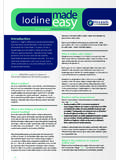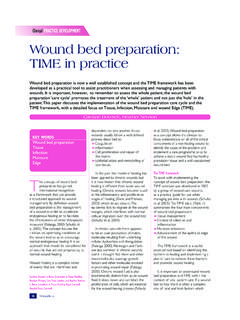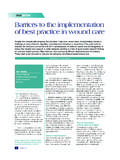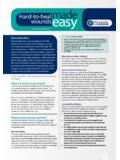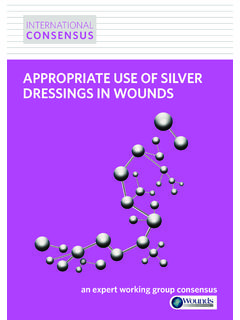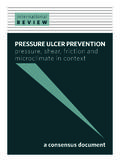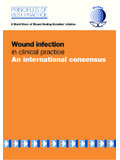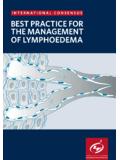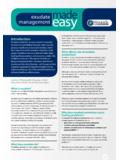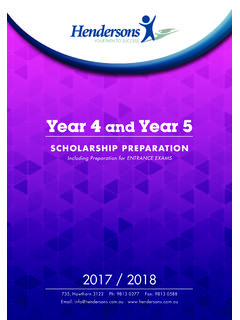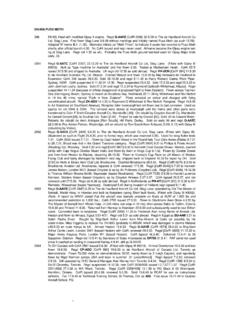Transcription of BEST PRACTICE GUIDELINES: EFFECTIVE SKIN AND …
1 INTERNATIONAL best PRACTICE . best PRACTICE . guidelines : EFFECTIVE . skin AND WOUND. MANAGEMENT OF. NON-COMPLEX BURNS. 3 best PRACTICE guidelines : EFFECTIVE skin AND WOUND MANAGEMENT OF NON-COMPLEX BURNS. FOREWORD. Supported by an educational This document is a practical guide to the management of burn injuries for grant from B Braun healthcare professionals everywhere who are non-burns specialists. With an emphasis on presenting hands-on and relevant clinical information, it focuses on the evaluation and management of non-complex burn injuries The views presented in this that are appropriate for treatment outside of specialist burns units.
2 However, document are the work of the it also guides readers through the immediate emergency management of all authors and do not necessarily reflect the opinions of B Braun. For burns and highlights the importance of correctly and expediently identifying further information about B Braun complex wounds that must be transferred rapidly for specialist care. Finally, it wound care products, please go to: looks at the ongoing management of newly healed burn wounds and post- discharge rehabilitation. Wounds International 2014 The document acknowledges the importance of continuous and integrated Published by input from all members of the multidisciplinary team, where such a team Wounds International exists, while recognising the role and resources of singlehanded and outreach A division of Schofield Healthcare Media Limited generalists providing a complete care service.
3 Enterprise House 1 2 Hatfields Although strategies vary within and between regions, this document seeks to London SE1 9PG, UK. present the essential key best PRACTICE principles that can be applied univer- sally and adapted according to local knowledge and resources. EXPERT WORKING GROUP. Bishara Atiyeh, Professor of Plastic and Reconstructive Surgery, Division of Plastic Surgery, To cite this document. American University of Beirut Medical Centre, Department of Surgery, Lebanon International best PRACTICE Juan P Barret, Head, Department of Plastic Surgery and Burns & Director, Burn Center/Face and guidelines : EFFECTIVE skin and Hand Transplantation Program & Professor of Surgery, Department of Surgery, University wound management of non- Hospital Vall d'Hebron, Barcelona, Spain complex burns.
4 Wounds Interna- Professor Hu Dahai, Professor of Surgery, Department of Burns and Cutaneous Surgery, Xijing tional, 2014. Hospital, The Fourth Military Medical University, Xi'an, PR China Free download available from: Professor Franck Duteille, Head of Plastic, Reconstructive and Aesthetic Surgery Unit and Burns Centre, CHU, Nantes, France Ann Fowler, Burns Outreach Senior Nurse Practitioner, Stoke Mandeville Hospital, UK. Dr Stuart Enoch, Director of Education and Research, Doctors Academy Group, Cardiff, UK, Visiting Professor, Department of Biomedical Technology, Noorull Islam University, India Elizabeth Greenfield, Administrative Director, International Society for Burn Injury, Texas, USA.
5 Andr Magnette, Head Nurse, Burns Unit, Centre Hospitalier Universitaire de Li ge, Belgium Heinz Rode, Emeritus Professor of Paediatric Surgery, Red Cross Children's Hospital, University of Cape Town, South Africa Professor Xia Zhao-fan, Professor and Chairman, Department of Burn Surgery, Changhai Hospital, Second Military Medical University, Shanghai, PR China C . 3 best PRACTICE guidelines : best PRACTICE guidelines : EFFECTIVE . EFFECTIVE skin . skin AND. AND WOUND. WOUND MANAGEMENT. MANAGEMENT OF. OF NON-COMPLEX. NON-COMPLEX BURNS.
6 BURNS. INTRODUCTION. Introduction Burn injuries present many challenges to the In developing low- and middle-income BOX 2: REGIONAL DIFFER- diverse range of healthcare professionals who countries (LMICs), burn injuries are an in- ENCES IN BURN RATES5. encounter them worldwide. The European domitable problem, and much more common Q Infants in the WHO. Burns Association describes a burn injury as a than in the USA and Europe or other high- African Region have three complex trauma needing multidisciplinary and income developed countries3.
7 However, the times the incidence of continuous therapy1. exact number of burns in LMICs is difficult burn deaths of infants to determine. A conservative estimate puts worldwide Most non-complex burn injuries (see Box 1 the number of people admitted to hospital Q Boys under 5 years living for definitions) will heal spontaneously with with burns in India (population over 1 billion) in LMICs of the WHO. conservative treatment. However, the quality at some 700,000 to 800,000 each year 4. Eastern Mediterranean of initial care will affect the pain and distress a WHO reports that the majority of burn- Region are almost twice patient may experience, and will greatly influ- related deaths occur in LMICs, in particular as likely to die from burns as boys living in LMICs ence the aesthetic and functional outcome.
8 South-east Asia (Figure 1) (Box 25). of the WHO European Studies show that burn injuries that take more Region than 2 3 weeks to heal are much more likely Q The incidence of burn to result in hypertrophic scarring2. FIGURE 1: Regional distribution of injuries requiring medical fire-related mortality6 care is nearly 20 times Complex burns must be promptly and appro- higher in the WHO West- priately identified and referred. Practitioners ern Pacific Region than in called on scene must also be well versed in 4% the WHO Region of the emergency management, including optimal 9% Americas fluid resuscitation and wound care, prior to transfer.
9 9%. BOX 1: DEFINITIONS 53%. 10%. This document uses the following definitions Non-complex burn: (previously described as 15%. minor burns) any partial thickness thermal burn covering )15% total body surface area (TBSA) in adults or )10% in children ()5% in children younger than 1 year) that does not affect a critical area*. Includes deep dermal South-east Asia Western Pacific burns covering )1% of the body. Africa Europe Complex burn: (previously described as ma- Eastern Mediterranean USA. jor burns) any thermal burn injury affecting a critical area* or covering >15% TBSA in adults or >10% in children (>5% in children younger than 1 year).
10 All chemical and electrical burns Illiteracy, poverty and urban overcrowding, are considered complex. along with social, infrastructural, economic and cultural issues complicate further the *Burns to hands, feet, face, perineum or geni- universal challenges of prevention and man- talia, burns crossing joints and circumferential agement3,4. A discussion of the strategies burns needed to address these issues is beyond the scope of this document, but the main points for consideration are listed in Box 3. (see p2). SIZE OF THE PROBLEM.
